Ars Electronica is vast – and this year doubly so, as it tackled topics from planetary climate down to microscopic microcosms. So we turn to guest contributor Sofy Yuditskaya aka The Source, media artist and educator, to navigate highlights and insights from the landmark media festival.
Here’s Sofy:
Greetings from a very warm Ars Electronica Festival: Welcome to Planet B!
This year’s “Planet B” theme placed its focus on climate action, though the topics that truly stood out were direct action and living embodiment. The program brought a fresh take on electrically minding humans living on a planet deep in a resource crisis.

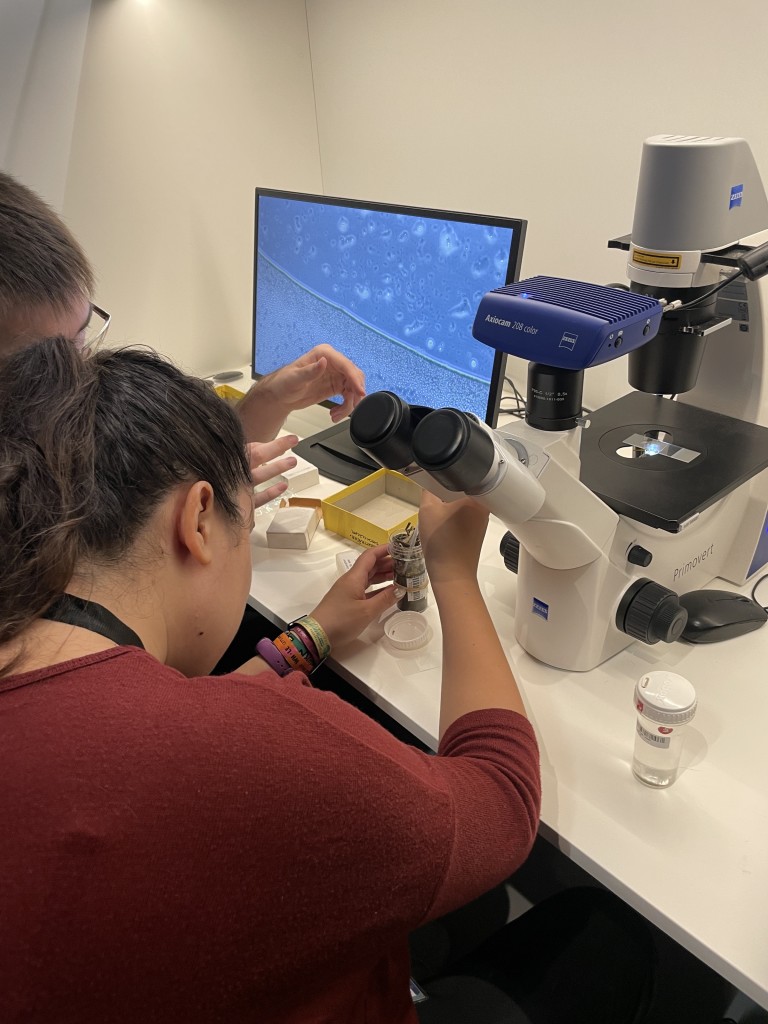
The workshops were my favorite track of the festival, featuring accessible step-by-step activities, each allowing participants to make their own compact versions of the larger festival artworks They were low-cost, incredibly fun, and pleasantly achievable. I got to make a battery out of some mud collected from the Donau (Danube) River and a solar panel out of locally collected berries. Other highlights include writing with microbes and learning how to make ad-hoc mesh-networked umbrellas for protest purposes.
https://ausstellungen.ufg.at/vonschwarzenschwaenen/design-and-technology/https://ars.electronica.art/planetb/en/water-in-postanthropocene/
A mock climate court, a jarring piece of meta-performance art, stood out like an open sore in the middle of the festival. Situated centrally on the event’s grounds, it was literally impossible to ignore when moving from event to event. Presenters followed rules I can only assume are standard in some international court. They argued their cases for the life and death of entire ways of life — on a nation-by-nation basis — for the full length of the festival. It was a sobering reminder that laws are nothing without enforcement.
Were their conclusions meaningless, since the festival goers have neither the means nor the authority to enact them? On the one hand, one can say art is meaningless because it is not public policy, on the other hand, public policy when performed as art stung sharper still. I truly hope the performers and festival goers were inspired by this piece enough to get involved in legislation.
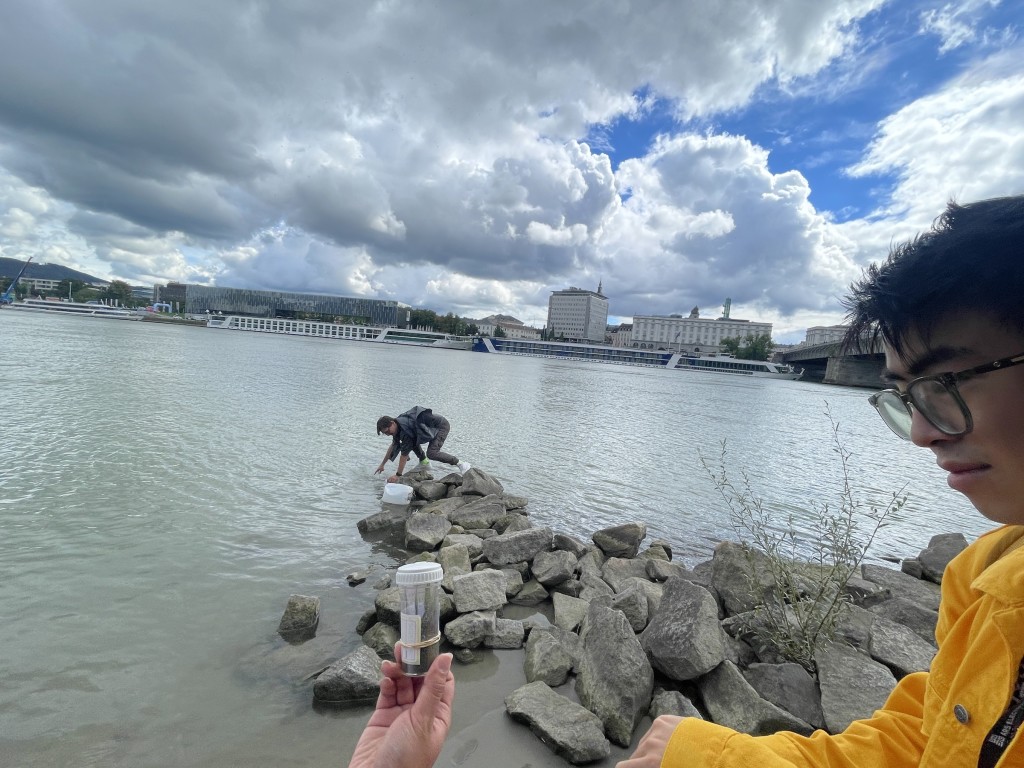
I got to make a battery out of some mud collected from the Donau (Danube) River and a solar panel out of locally collected berries.
There were the usual panel talks by artists and activists. The level of discussion was high enough, though talks were not nearly as well attended as in festivals past, as the program seemed to shift organically more to events and installations. [Ed.: wonder if this will be the Zoom effect? We’re all exhausted of talks? -PK] In perhaps a sign of things to come, there was also proportionally less institutional academic presence, but still Ars invited local universities the Kunstuniversität of Linz, Johannes Kepler University (JKU), and Anton Bruckner Privatuniversität, plus Berlin’s UdK. In a newer direction, a program called the Festival University invited students from around the world to a shared program that will extend beyond the festival.
The artistic contributions from various universities were for the most part on a very high level. Here are my top picks:
https://ars.electronica.art/planetb/en/das-ding/
http://triple-double-u.com/you-and-i-you-and-me/
https://ars.electronica.art/planetb/de/automated-angklung/
https://ars.electronica.art/planetb/en/listening-room/
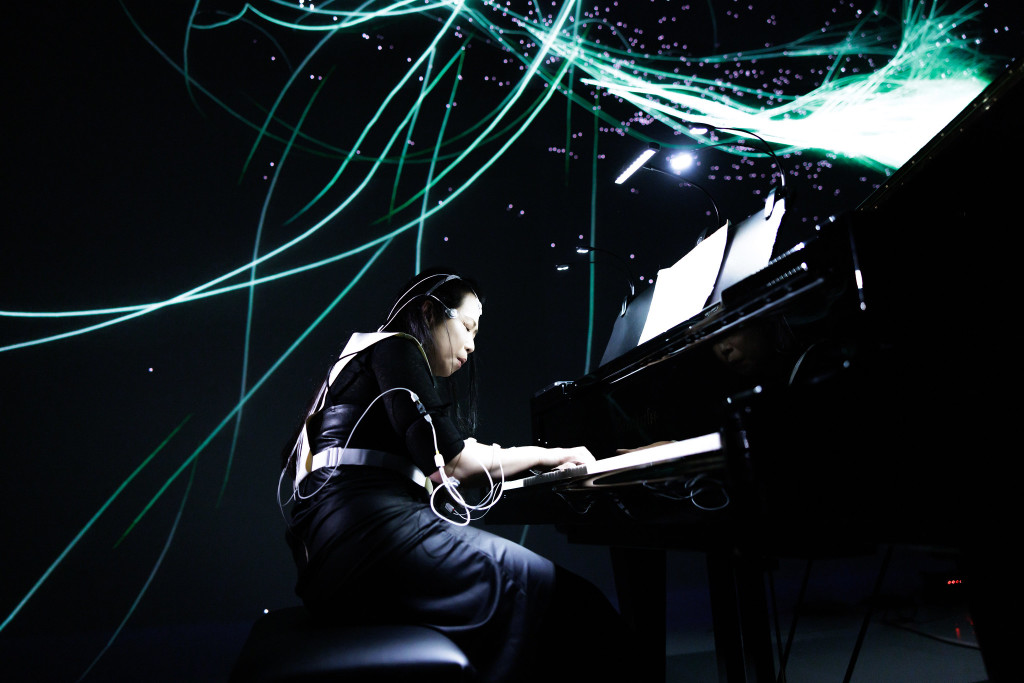
Photo: Florian Voggeneder.
The presentations in Deepspace, or as I like to refer to it, the Holodeck, were oddly corporatized. Project “collaborators” included teams at Wacom and Cisco among other big-name companies. Despite these corporate team members, the projects still presented as DIY in delivery and level of fabrication.
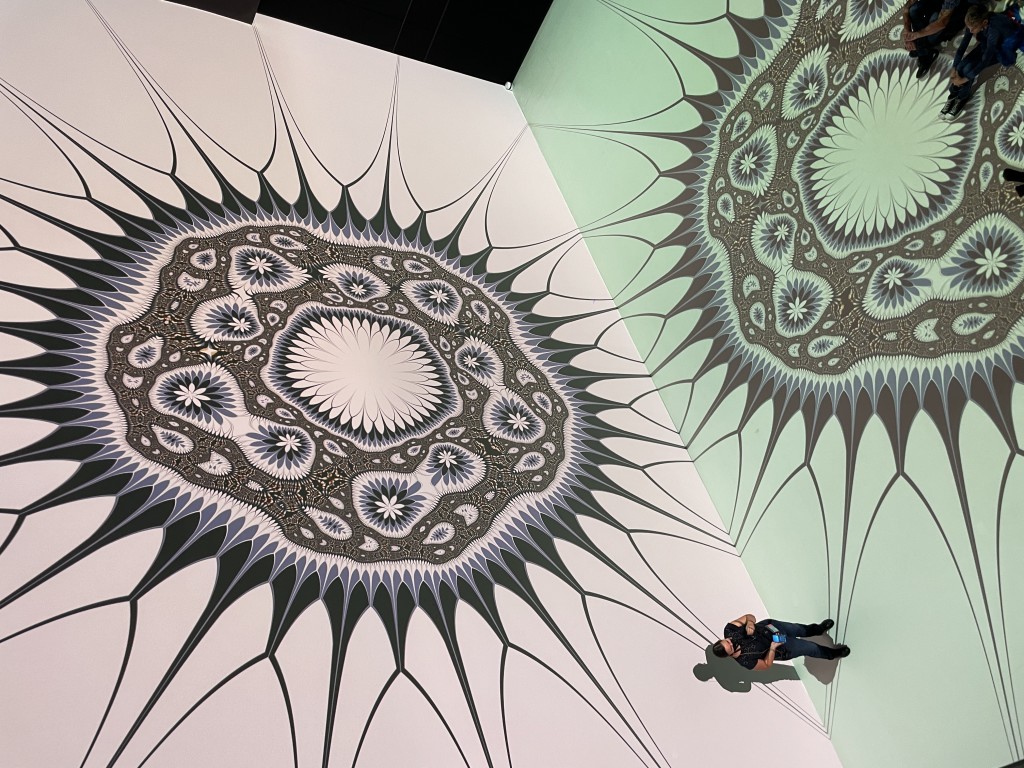
A portion of the festival seems to stand at this crux. Perhaps it will become more corporate — a realistic expectation for Planet B if our current state of affairs is to be an indicator. Or maybe it will move once again into the Futurelab R+D style of the past, reflecting stably funded cultural workers. I do question the value of sharing IP with major corporations in the way that they did. At best, these contributing teams will develop an art wing similar to Thoughtworks Arts, but at worst, the shared R+D will be channeled into a highly profitable product which brings up a lot of questions since Ars is after all a state project. [Ed.: This is a topic I hope to cover more in detail – to say it’s a concern for events like Ars is an understatement, and it’s also clear European funding is entering a challenging phase.]
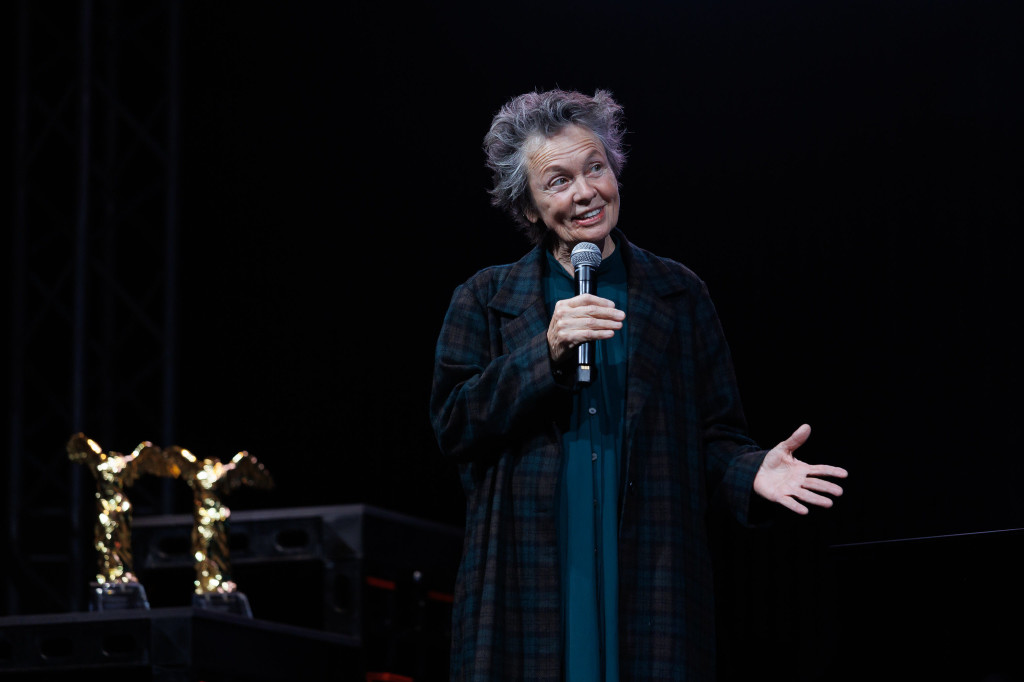
I did miss the specialist lectures, the big-star thinkers, and notable names in conversations and on panels. That said, Laurie Anderson’s speech was incredibly inspiring. Ever the generalist and cosmist, she pulled the lens back from specific technologies and issues and reminded us of spirit, intent, and the importance of saying by doing gracefully. Her keynote concert — performed with Rubin Kodheli, Dennis Russel Davies, and the Brno Philharmonic — was on the theme of Amelia Earhart. Laurie examined Earhart’s quest to circumnavigate the world, and how she gave up her life for that dream. The performance underscored the realization that knowing the world is just as much a labor of love as saving it. Our anxiety about our dwindling resources and ability to provide for future generations may be transference for coming to grips with our own eventual ends.
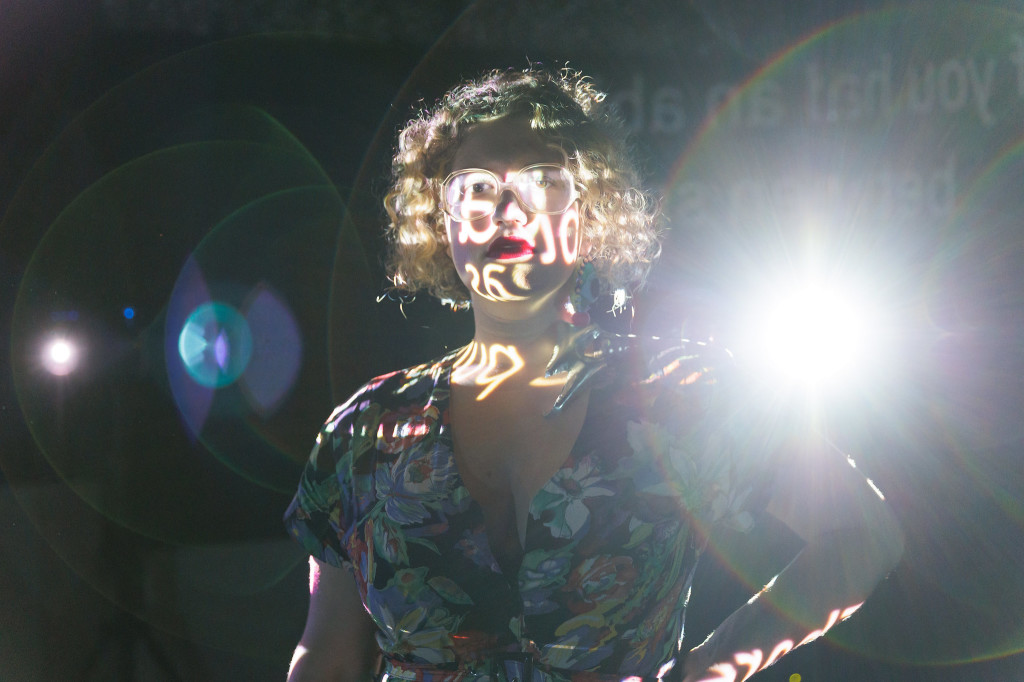
The piece is an attempt to rearrange the understanding of physical space and create an infinity of possible compositions that allow the imaginary to shape the notions of the viewer. The audience is invited to explore the space individually by submerging themselves into merging clouds of words using translucent screens to navigate within the environment. YOU ARE SOURCE PROJECTION AND REFLECTION is a site-specific installation and the text is always adapted to the exhibition space.
photo: tom mesic, courtesy Ars Electronica
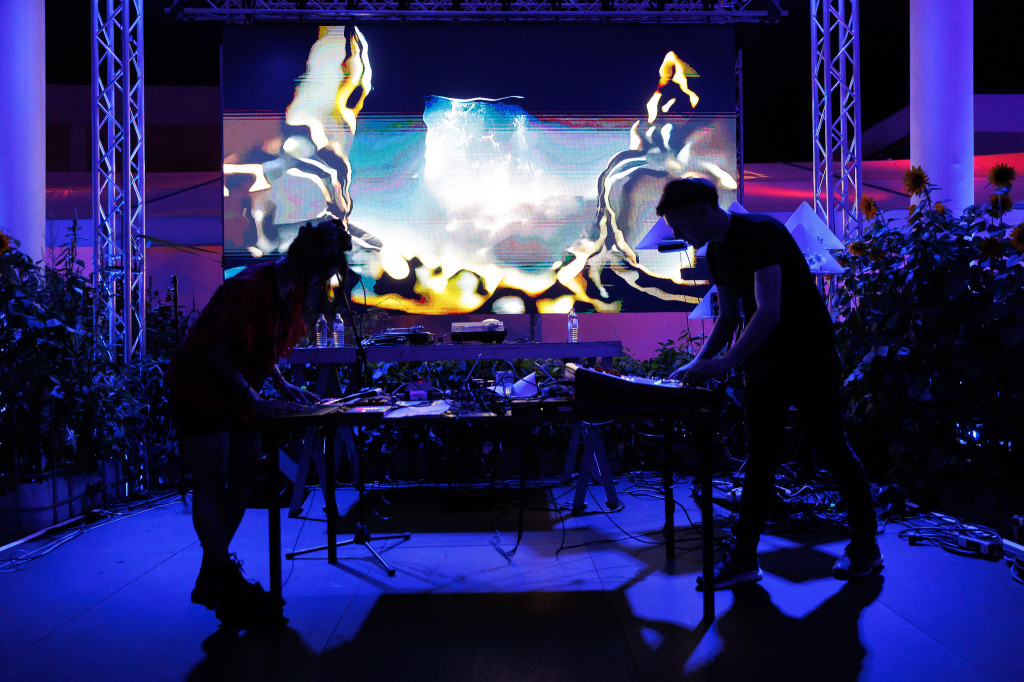
In the performance Robots, Bass, and Hot Algorithms! AI artist Portrait XO enters the stage with Moritz Simon Geist for musical interventions featuring techno robots and an AI collaborator. Portrait XO is an award-winning independent researcher and artist who creates musical and visual works with traditional and non-traditional methods based on ongoing research in computational creativity and human-machine collaboration. Sonically obsessed with space and time, she explores how far she can take storytelling and sound traveling through latent space. Moritz Simon Geist is a music producer working with music robots. He started because he wants to invent the future of electronic music — with robots! His projects range from robotic music performances to robotic sound installations.
Photo: tom mesic
Thanks to scattering locations across the grounds, this greatly expanded edition felt more intimate than ever, with small crowds and smallish installations throughout. It now sprawled across the JKU campus, the Lentos Kunstmuseum, the OK Center, the massive Tabak Fabrik, Bruckner University, the stretch on the Donau between Bruckner Haus and Lentos, and of course the Ars Electronica Center itself. That’s not to mention the countless other small venues and galleries that set up shop in anticipation of the great influx of Ars’ crowds.
In contrast, the festival-finale Linzer Klangwolkw 22 production “Mother Gilgamesh” was a massively spectacular event. It continued old-school noise traditions of staging massively distributed sonic performances along a river — think such performances as Symphony of Sirens (Arseny Avraamov, Baku 1922). But it was also a modern technological spectacle reminiscent of a modest Olympic opening ceremony or a Super Bowl halftime show.
Complete with drones, massive pyrotechnics, fire dancers, an orchestra and choir on a boat on water, water jet dancers suspended in the air through water propulsion, a massive boat-based LED display, a distributed sound system spanning what seemed like half a kilometer, dancers climbing boat based scaffolding, and much much more. The intensity of this populist spectacle was quite satisfying, and in a testament to the provisions for the residents of Linz, it could be enjoyed without the added cost of a festival pass.
Besides this extravaganza of spectacle and the keynote concert, musical and movement performances were speckled throughout the festival. Except for evening music events at the Linz KunstUni I hadn’t seen more than three musical acts in succession. This led to an ever-present immersion in musical performance but also a somewhat truncated night performance program. One could follow up with informal afterparties at Stadt Werk Stadt, Strom, etc.
Overall the balance between spectacle and lecture, high art and DIY, student and professional expo, was well kept. The afterparties were sufficiently DIY and crunchy, the official receptions were friendly, the staff was engaging and fun, Laurie Anderson and Gerfried Stocker were roaming the grounds and mixed freely with festival attendees at events. No event was so exclusive one could not get to it, watch it from just outside the show zone, or be let in the standing-room section.
In this light, I feel privileged to have been at this post-pandemic crux before the festival redetermines itself in new directions. Everyone was hungry to be there and put their best and most generous foot forward. I haven’t been back to the festival in many years, and many of the people I spoke to were also only back after a many years hiatus–perhaps due to its return post the cancellations of COVID-19. There was the feeling of a family reunion, one that comes with most any festival one returns to, but the feeling was amplified for everyone after all the cancellations and grief that came with the past three years. If you have a chance to go next year, go check it out before we all start taking this wild ride for granted again.
At top:
Schwarzes Rauschen (Black Noise) / Botond Kelemen (HU), Bálint Budai (HU), Daniel Haas (STURMHERTA) (AT )
The project is an immersive, interactive installation, consisting of 12 different, dynamic worlds, which change their structures with the movement of the group of people currently being tracked. Every world contains a certain amount of noise, randomness, decreasing with every level. Starting at a level of pure chaos, with every further world the environment becomes less noisy and more structured and harmonious, leading to total silence in the end.
Photo: tom mesic / courtesy Ars Electronica
About the author:
Sofy (@_the_s0urce_) is a site-specific media artist and educator working with sound, video, interactivity, projections, code, paper, and salvaged material. Her work focuses on techno-occult rituals, street performance, and participatory art. Sofy’s performances enact and reframe hegemonies, she works with materials that exemplify our deep entanglement with petro-culture and technology’s affect on consciousness. She has worked on projects at Eyebeam, 3LD, the Netherlands Institute voor Media Kunst, Steim, ARS Electronica, Games for Learning Institute, The Guggenheim (NYC), The National Mall and has taught at GAFFTA, MoMA, NYU, Srishti, and the Rubin Museum. She is a PhD Candidate in Audio-Visual Composition at NYU GSAS currently on her Fulbright year at TheISRO in Bangalore.